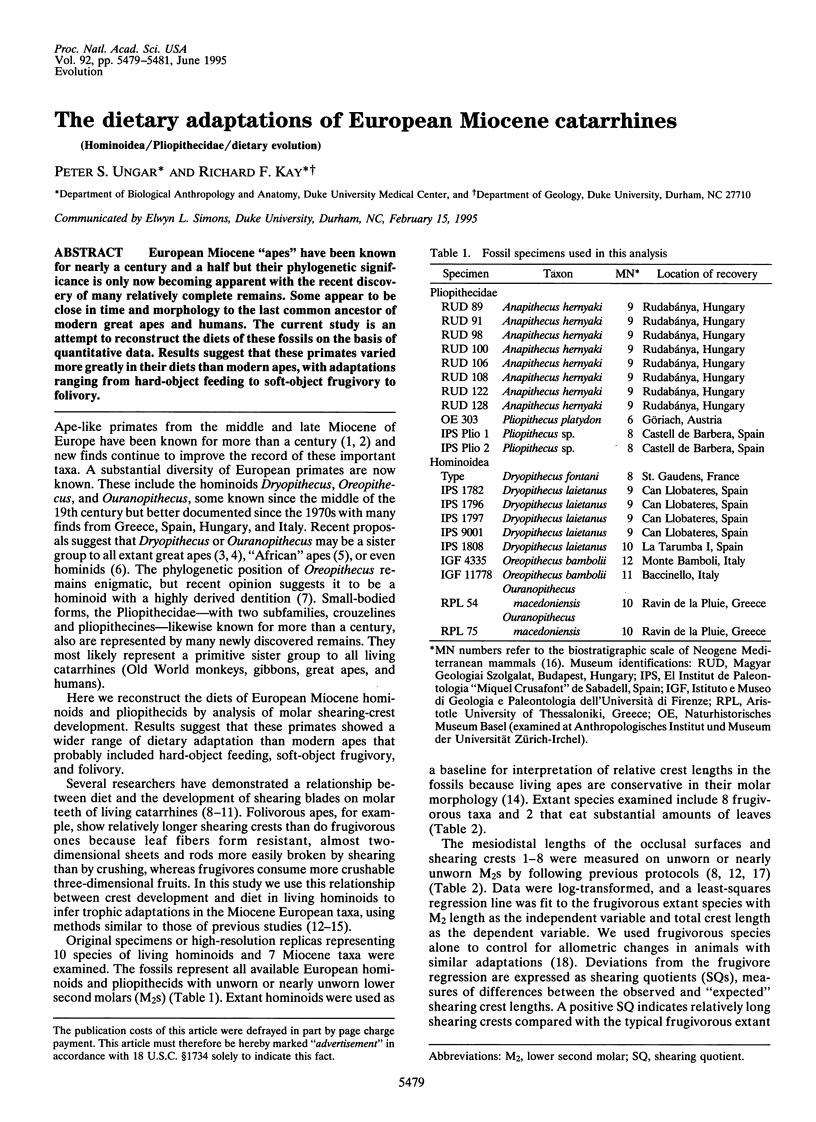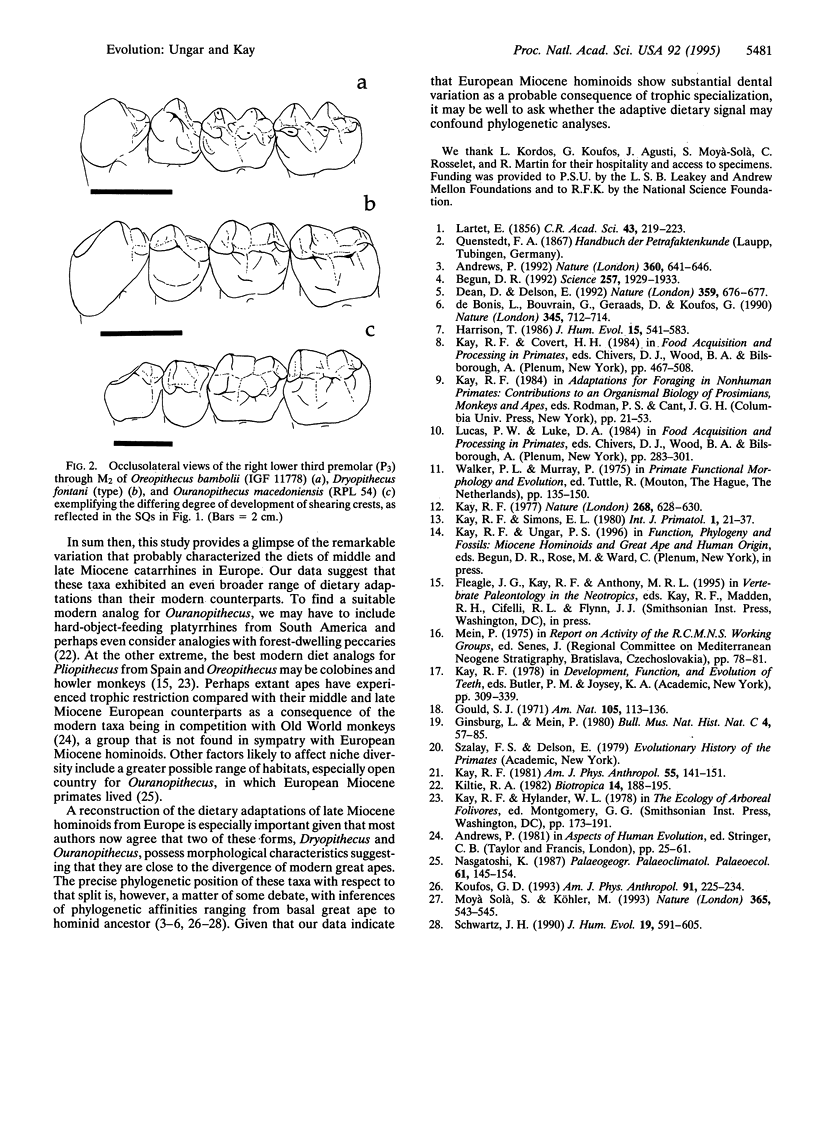Abstract
European Miocene "apes" have been known for nearly a century and a half but their phylogenetic significance is only now becoming apparent with the recent discovery of many relatively complete remains. Some appear to be close in time and morphology to the last common ancestor of modern great apes and humans. The current study is an attempt to reconstruct the diets of these fossils on the basis of quantitative data. Results suggest that these primates varied more greatly in their diets than modern apes, with adaptations ranging from hard-object feeding to soft-object frugivory to folivory.
Full text
PDF


Selected References
These references are in PubMed. This may not be the complete list of references from this article.
- Andrews P. Evolution and environment in the Hominoidea. Nature. 1992 Dec 17;360(6405):641–646. doi: 10.1038/360641a0. [DOI] [PubMed] [Google Scholar]
- Begun D. R. Miocene fossil hominids and the chimp-human clade. Science. 1992 Sep 25;257(5078):1929–1933. doi: 10.1126/science.1411507. [DOI] [PubMed] [Google Scholar]
- Dean D., Delson E. Palaeoanthropology. Second gorilla or third chimp? Nature. 1992 Oct 22;359(6397):676–677. doi: 10.1038/359676a0. [DOI] [PubMed] [Google Scholar]
- Koufos G. D. Mandible of Ouranopithecus macedoniensis (Hominidae, Primates) from a new late miocene locality of Macedonia (Greece). Am J Phys Anthropol. 1993 Jun;91(2):225–234. doi: 10.1002/ajpa.1330910208. [DOI] [PubMed] [Google Scholar]
- Solà S. M., Köhler M. Recent discoveries of Dryopithecus shed new light on evolution of great apes. Nature. 1993 Oct 7;365(6446):543–545. doi: 10.1038/365543a0. [DOI] [PubMed] [Google Scholar]
- de Bonis L., Bouvrain G., Geraads D., Koufos G. New hominid skull material from the late Miocene of Macedonia in northern Greece. Nature. 1990 Jun 21;345(6277):712–714. doi: 10.1038/345712a0. [DOI] [PubMed] [Google Scholar]


